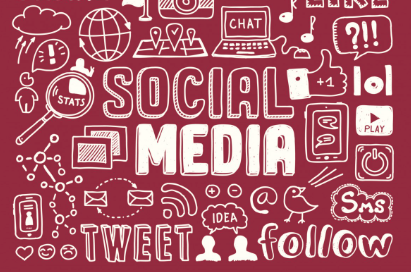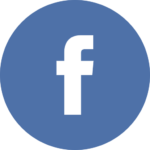Social Media Terms : Part 3 of 7

By Debbie Gregory.
New terms, phrases, and acronyms are constantly popping up across every social network. It can be difficult to keep up without drowning in all of the new digital jargon. Below are even more terms to help you understand and become more online savvy.
Crisis management
Crisis management is the art of addressing a crisis to minimize the amount of damage caused and get things back on track as quickly as possible. Every organization should have a social media crisis management in place to manage social media risk and be prepared to respond quickly if crisis strikes.
Crowdsourcing
Crowdsourcing involves tapping into your online community for new ideas, suggestions, information, or content. User-generated content is a prime example of crowdsourcing. Asking for ideas through interactive features like polls is another.
Dark post
A dark post is an unpublished social post promoted as an ad to a specific audience. It is a post that cannot be found organically and does not appear on your brand’s timeline. Dark posts can help with split testing and help prevent your timeline from becoming flooded with promotional posts. While the term “dark post” may make this content seem secretive, remember that any user can now look up all your Facebook ads through the Page Transparency feature.
Dark social
Dark social is social sharing that cannot be traced back to the original source. This means the content has been passed on through private channels like email or messaging apps, rather than public channels like timelines and newsfeeds. Dark social shows up in analytics programs as “direct traffic.”
Dashboard
A social media dashboard is a tool that allows marketers and social media managers to manage all their social platforms from one screen. A dashboard allows its users to schedule, post, view, and respond to both organic and paid social posts, and to create analytics reports. A dashboard is also an important tool for social listening.
Direct message
A direct message (DM) is a private message sent through a social platform. By default, DMs from non-followers are blocked or filtered into a secondary inbox. However, brands who wish to use DMs to interact with customers can change their settings to receive DMs from anyone.
Disappearing content
Disappearing content, also known as ephemeral content, refers to a social post that vanishes after a set amount of time, usually 24 hours. Facebook Stories, Instagram Stories, and Snaps are all examples of disappearing content.
Doxing
Doxing is the (very frowned-upon) practice of searching for and publishing the personal information of a private individual. Doxers use these attacks way to threaten or intimidate their targets.
Ebook
Ebook is short for “electronic book.” This is a digital file, such as a PDF or EPUB, for reading on a computer, mobile device, or dedicated ebook reader.
Embed
An embed is a social post or other digital content displayed within another piece of content using digital embedding tools. Most social networks offer native tools to embed their content in blog posts or webpages using a piece of code. Properly embedded content retains the original content of the post, as well as links to the original post and the creator’s profile.
Emoji
Emojis are a set of tiny graphics used in digital channels from text messages to social media. They evolved from emoticons (such as the smiley face) made using characters on the standard keyboard. Emojis first appeared in the late 1990s. In 2010, the Unicode Consortium approved Google’s proposal to standardize emoji characters. iOS and Android both have built-in emoji keyboards.
Employee advocacy
Employee advocacy is what happens when employees share their passion for their workplace on social media. This can take several forms. Employees might share specific details about a new product launch, or they might give a behind-the-scenes look at company culture. An organized employee advocacy program can help employees to promote your brand effectively while maintaining company guidelines.
Endorsement
An endorsement is a form of recommendation on LinkedIn. A fellow LinkedIn user can endorse you for specific skills simply by clicking an endorse button. These endorsements then appear on your profile and help demonstrate credibility in your areas of expertise.
Engagement
Engagement is any form of interaction with your brand on social media. Likes, comments, and shares are all forms of engagement.
Engagement rate
Engagement rate is a measure of how many people interact with your social media content. There are several ways to calculate engagement rate, but all aim to calculate what percentage of people who were exposed to a post chose to engage with it in some way.
Evergreen content
Evergreen content is content designed to last for the long term. It’s not tied to any specific event or promotion and can bring traffic to your website for years to come.
Fan
A fan is someone who likes your Facebook Page. “Fan” is sometimes used more generally to refer to someone who follows you on any social channel, but only Facebook officially uses this term.
Favorite
Favorite was the term Twitter originally used to indicate Likes. Favorites were indicated with a star icon. However, Twitter now uses a heart icon and and uses the term likes, in line with other social networks.
Feed
A feed is an updated list of all the new content posted by the accounts a user follows on social media. Rather than being purely chronological, most social media feeds are controlled by an algorithm.
Filter
A filter is a photo effect that can be applied to images before publishing them, from simple black-and-white or sepia to flower crowns and puppy ears. Filters are available on Instagram, Snapchat, Facebook Messenger, and many other apps with camera integrations.
Followers
Followers are people who have liked (or “followed”) your accounts on social media.
Follow Friday (#FF)
Follow Friday is a hashtag used to highlight some of your favorite Twitter accounts. Including someone in a #FF post is a way of recommending their account to your followers.
Friend
A friend is a person that you connect with on Facebook. Unlike a fan or follower, a friend is a two-way connection—both you and your friend have to endorse the relationship. Facebook business pages cannot have “friends,” only fans or followers.
Stay tuned for Part 4 of this series and print your glossary!










